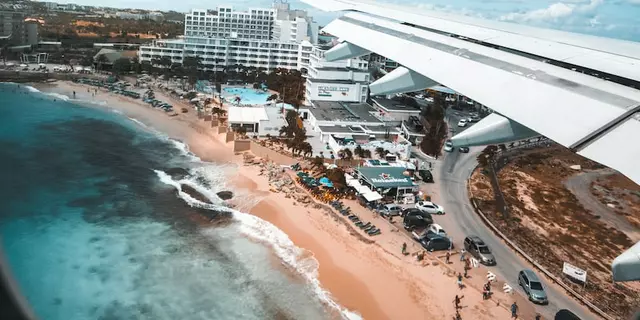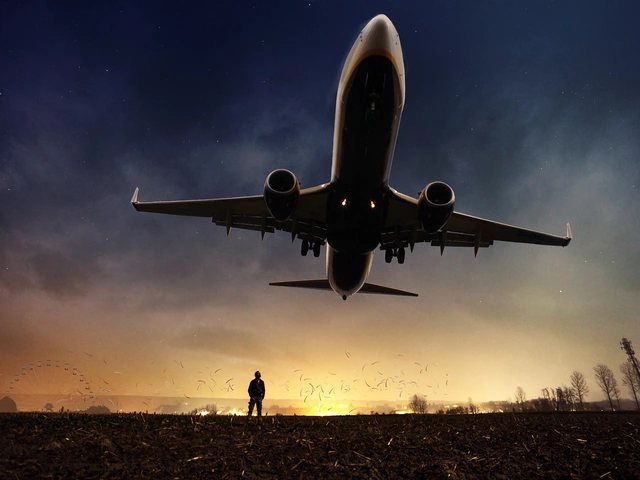Understanding Earth's Rotation and Air Travel Routes
When flying from India to the United States, one typically takes a route towards the North and West. This might seem quite counterintuitive since if you were to look at a flat map of the world, the shortest route seems to go directly to the East. But here's where things get fun - our world isn't flat! Aarav here, to make the concept of air travel routes simpler. So, sit back and let's take this "flight" together.
First and foremost, let's focus on the Earth's rotation. Despite all those geography textbooks talking about the East to West rotation of the Earth, it's important to understand that this is specific to the equator. As you move further towards the poles, the Earth's rotation creates an optical illusion that makes it appear more as though the Earth is rotating from North to South. That's partially why planes heading to America from India steer North instead of East.
Navigational Maps and the Great Circle Route
"What's the shortest route between two points?" you ask me, with a knowing smirk on your face. "A straight line," I concede. But while that's true on a flat surface, we have established that the Earth is not flat. When translated onto the curved surface of a sphere, like Earth, that straight line becomes what we call a great circle route. This is the shortest path between two points on a globe, and it's what pilots aim to follow, rather than sticking directly to lines of latitude or longitude.
Now, let's think of our flat map again. Transferring a 3D globe to a 2D map distorts the lines and angles, meaning the shortest route - the Great Circle Route – can look counterintuitive. On a globe, a flight from India to the USA that moves North and then West follows a curve that is actually the shortest route – this very concept is the principle of the Great Circle route.
Fun Fact: The Coriolis Effect
What if I told you there's a strange unseen force that affects the direction of winds and currents on the Earth? Sounds like a comic book plot, right? Well, it's real! Enter: The Coriolis Effect. This phenomenon is caused by the rotation of the Earth and it's another reason why flights from India to the US don't typically head directly East.
Due to the Earth's rotation, air tends to move to the right in the Northern hemisphere and to the left in the Southern hemisphere. This effect influences flight paths and can cause planes to deviate from what we perceive to be the straightest path on a flat map.
Playing It Safe: Avoiding Conflict Zones
Another factor that impacts the flight path is air safety. Pilots and air traffic controllers prefer to avoid zones of conflict and political instability. Flight paths are regularly adjusted based on the geopolitical situations across the globe. Heading directly East from India could take you right through some potentially volatile regions, an unnecessary risk when there are safer options available to the North and West.
Remember, the safety of passengers trumps any negligible difference in flight duration that might be gained from a more direct route. So be assured, the flight path taken by your pilot isn't just a random choice, it's a decision based on careful calculations and safety considerations.
Air Traveller's Jet Stream Perks
Walking with the wind at your back can speed you up, right? The same principle applies to planes in flight. They try to take advantage of natural wind patterns, notably, jet streams. These fast-flowing, narrow air currents found high in the Earth's atmosphere can dramatically decrease flight time and fuel consumption if utilised effectively.
If you're flying from India to the US, your pilot will try to catch the jet stream that's blowing from West to East high above the Atlantic. It's almost like hitching a ride on a colossal, invisible conveyor belt. Trust me, riding along with a jet stream could save both time and a whole lot of jet fuel.
The Curious Case of Aarav's Eastward Flight
And hey, in instances where we want a change of scene or when we're up for an adventurous journey, routes can change too, I remember once I was scheduled to fly directly East from India. A handful of us were to journey the path less taken. Well as you can imagine, it was a pretty atypical affair.
Turns out, this 'eastwards trek' was a round the world trip, touching upon exotic locations, including a stop in Hawaii. Now that's an air-route you don't often find in regular hoppers. But remember, these are exceptions and not the rule! So, usually when you are flying westward from India to the USA, sit back, relax, enjoy the in-flight service and trust your pilot's navigational expertise to get you there in the shortest, safest time!
So now, it's more than clear why we don't fly East to go from India to USA. Between the shape of the Earth, the Coriolis effect, the need to avoid conflict zones, and the lure of tailwinds, that path going across the Atlantic, North, and then West, starts to look pretty good, huh? Safe and pleasant travels!



